UPSC Daily Current Affairs- 26th August 2023 | Current Affairs & Hindu Analysis: Daily, Weekly & Monthly PDF Download
GS-I
Gond Painting
Subject: History
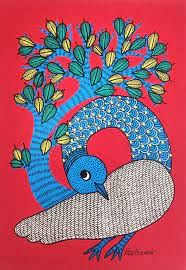
Why in News?
Recently, during the BRICS meeting, the Prime Minister of India gifted a Gond painting to the Brazilian president Lula da Silva.
About Gond Painting:
- It is a famous folk art of the Gond tribal community of central India.
- It is done to preserve and communicate the culture of the Gond tribal community.
- Themes: Gond tribes are highly interlinked with nature, and this appears in their paintings too. They include animals, the mahua tree, mythological stories, Hindu gods, local deities and folktales, etc.
- The artist uses his distinctive pattern and style to fill the images. These style signatures are used in collages to make a complete picture, such as dots, fine lines, curved lines, dashes, fish scales, etc.
Key facts about the Gond Tribe
- The Gonds are the largest Adivasi Community in India and can be traced to the pre-Aryan era.
- The word Gond comes from Kond, which means green mountains.
- They are a heterogeneous group spreading over large areas from the Godavari gorges in the south to the Vindhya Mountains in the north.
- They live in the states of Madhya Pradesh, Maharashtra, Telangana, Andhra Pradesh, Bihar, and Odisha.
- The majority speak various mutually unintelligible dialects of Gondi.
Source: Hindustan Times
Bidriware
Subject: History
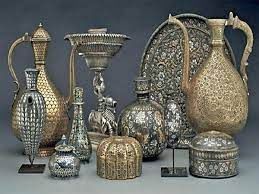
Why in News?
Indian Prime Minister recently gifted Bidri work pair of 'Surahi' from Telangana to South African President Cyril Ramaphosa.
About Bidriware:
- It is a form of metal handicraft that has Persian influences and has been made for centuries by artisans from Karnataka’s Bidar district.
- It is renowned for its intricate, handcrafted designs.
- Origin:
- The origin of Bidriware as a craft is attributed mostly to the Bahamani Sultans who ruled the region during the 14th and 15th centuries.
- It was first brought to India by the noted Sufi Khwaja Moinuddin Hasan Chisti in the form of utensils.
- The art form developed in the kingdom was a mix of Turkish, Persian and Arabic influences, which were intermingled with the local styles, and thus a unique style of its own was born.
- This native art form has obtained a Geographical Indications (GI) registry.
- Bidar in Karnataka and Hyderabad in Telangana are the most vibrant centers of Bidriware.
- How is Bidriware made?
- Bidri Ware is manufactured from an alloy of copper and zinc (in the ratio 1:16) by casting.
- The zinc content gives the alloy a deep black colour.
- The craftsman uses small chisels to engrave the design over the freehand etching.
- Fine wire or flattened strips of pure silver are then carefully hammered into these grooves.
- A special variety of soil, which is available only in the unlit portions of the Bidar fort, is used for the final blackening process. It is mixed with ammonium chloride and water to produce a paste, which is then rubbed onto a heated Bidri surface. The paste selectively darkens the body while it has no effect on the silver inlay.
- The product then undergoes a process called buffing to smoothen the surface.
Source: Times of India
GS-II
President’s Rule
Subject: Polity
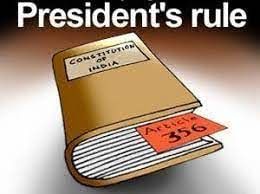
Why in News?
Amidst an escalating confrontation, Punjab Governor gave stern warning of invoking Article 356 (President’s Rule) in the state.
Grim Situation in Punjab
- Rampant Drug Abuse: The Governor cites reports from various agencies indicating widespread drug abuse in Punjab, raising significant concerns.
- New Drug Sales Trend: An emerging trend of selling drugs within government-controlled liquor vends is noted by the Governor.
- Ludhiana Liquor Vend Incident: Specific instances like the sealing of 66 liquor vends in Ludhiana by the Narcotics Control Bureau [NCB] and Chandigarh Police highlight the gravity of the issue.
- Disturbing Law and Order Indicators: The Governor references a recent report by the Parliamentary Standing Committee indicating alarming drug exposure or addiction levels, implying a breakdown in law and order.
- Public Response: The Governor underscores villagers’ resorting to street protests and forming their own defence committees against drug-related threats.
Governor’s Discontent
- Unfulfilled Information Requests: The Governor expresses dissatisfaction with CM’s reluctance to provide the requested information, highlighting Article 167’s mandate for the CM to respond to the Governor’s requests.
- Alleged Deliberate Silence: The Governor implies that the Chief Minister’s apparent failure to respond might be a deliberate act of evasion.
About President’s Rule
- Article 356 of the Indian Constitution, commonly known as President’s Rule, empowers the President to impose central rule in a state where the constitutional machinery has broken down.
- While initially intended for extraordinary circumstances, it has often been misused by central governments for political purposes.
Provisions of Article 356:
- Imposition of President’s Rule: Article 356 allows the President to withdraw the executive and legislative powers of a state government when it cannot function in accordance with the Constitution.
- Triggering factors: The President can invoke Article 356 based on a report from the Governor or suo motu if the constitutional machinery has broken down in the state.
- Duration: It can be imposed for six months at a time, with a maximum duration of three years.
- Parliamentary approval: Every six months, Parliament’s approval is required to continue the imposition of the President’s Rule.
Historical Origins
- Inspiration from the Government of India Act, 1935: Article 356 was inspired by Section 93 of this act, which allowed the Governor of a province to assume the powers of the government under certain circumstances.
- Controlled democracy: The provision provided some autonomy to provincial governments while enabling British authorities to exercise ultimate power when necessary.
Political Misuse of Article 356
- Early instances: During Congress’s dominance, Article 356 was used against governments of the Left and regional parties in states. Jawaharlal Nehru’s government utilized it six times until 1959, including to dislodge Kerala’s elected communist government.
- Increasing misuse: In subsequent decades, Article 356 was used frequently against state governments by various central governments, including those led by Indira Gandhi and the Janata Party.
Landmark Judgment: S R Bommai Case
- Landmark Supreme Court ruling: In the 1994 R. Bommai v. Union of India case, the Supreme Court provided detailed guidelines on the use of Article 356.
- Specific instances for imposition: The court stated that the President’s Rule can be invoked in cases of physical breakdown of the government or a ‘hung assembly.’
- Curbing arbitrary use: The judgment emphasized the need to give the state government a chance to prove its majority or instances of violent breakdown before imposing the President’s Rule.
Source: The Hindu
In news: International Atomic Energy Agency (IAEA)
Subject: International Relations

Why in News?
Japan has begun discharging treated radioactive wastewater from the disabled Fukushima Daiichi Nuclear Power Station into the Pacific Ocean in a plan endorsed by the International Atomic Energy Agency (IAEA).
International Atomic Energy Agency (IAEA)
- IAEA is an international organization that plays a pivotal role in promoting the peaceful use of nuclear energy while preventing the proliferation of nuclear weapons.
- It was established in 1957 as an autonomous agency under the UN is headquartered in Vienna, Austria.
- It plays a crucial role in safeguarding the principles outlined in the Nuclear Non-Proliferation Treaty (NPT) of 1970.
- Despite its independent treaty, the IAEA remains accountable to both the UN General Assembly and the United Nations Security Council (UNSC).
What does it do?
- Promotion of Peaceful Nuclear Energy: Established amidst the Cold War’s geopolitical tension, the IAEA’s core mission centers on promoting the constructive application of nuclear energy.
- Prevention of Military Use: The agency’s fundamental role is to prevent the diversion of nuclear programs for military intentions, ensuring compliance with international agreements.
IAEA’s Tri-fold Missions
- Peaceful Utilization: Fostering member states’ constructive adoption of nuclear energy for peaceful purposes constitutes a pivotal aspect of IAEA’s mission.
- Safeguarding Measures: A cornerstone role of the IAEA involves implementing measures to verify the non-military use of nuclear energy, particularly through assessing declared nuclear activities and materials.
- Nuclear Safety: The IAEA takes an active stance in advocating stringent standards of nuclear safety to prevent accidents and ensure public and environmental protection.
Significant feature: IAEA’s Safeguards
- Purpose of Safeguards: IAEA’s safeguards are mechanisms designed to affirm that a nation adheres to its international commitment against exploiting nuclear programs for weaponry purposes.
- Verification Approach: Safeguards are founded on the meticulous examination of a state’s reported nuclear materials and activities, evaluating their accuracy and completeness.
- Varied Verification Measures: The agency employs a range of verification tools, including on-site inspections, visits, and ongoing monitoring, ensuring rigorous oversight.
Dual Dimensions of Safeguards
- Declared Nuclear Material Verification: Through the inspection of reported nuclear materials and activities, IAEA ensures that a state remains transparent in its nuclear endeavors.
- Non-Diversion Assurance: A significant facet is the assurance of the absence of undeclared nuclear materials or activities, thereby averting any unauthorized deviation from peaceful usage.
Source: Indian Express
Revised NCF: How school education could change
Subject: Polity and Governance
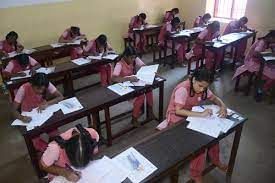
Why in News?
The launch of the revised National Curriculum Framework (NCF) heralds a transformative era in Indian education.
- Spearheaded by a 13-member steering committee led by Dr. K. Kasturirangan, former ISRO chief, the updated NCF is a milestone document shaping the contours of future school education.
About National Curriculum Framework (NCF)
- The NCF is a meta-framework that integrates the credits earned through school education, higher education, and vocational and skill education.
- The National Curriculum Framework (NCF) is a cornerstone of the New Education Policy (NEP) 2020.
- It consists of three verticals:
- National School Education Qualification Framework (NSEQF)
- National Higher Education Qualification Framework (NHEQF) and
- National Skills Qualification Framework (NSQF)
- There have been four revisions in NCF in the past: in 1975, 1988, 2000, and 2005.
Key features of NCF
- Multiple Languages Learning: In Classes 9 and 10, students embark on a journey of linguistic exploration involving three languages, with at least two originating from India’s diverse linguistic spectrum. Grades 11 and 12 entail the study of two languages, including one of Indian origin, aimed at cultivating a “literary level” of linguistic proficiency in at least one Indian language.
- Flexible Board Exams: Students are granted the freedom to take Board exams twice within an academic year, with the highest score being retained.
- Revised Mandatory and Optional Subjects: Departing from previous norms, Classes 9 and 10 see the inclusion of seven mandatory subjects, while Classes 11 and 12 witness six, providing a broader academic spectrum.
- Varied Subject Combinations: Students have the freedom to select diverse subject combinations, transcending traditional divides between Science, Social Science, Art, Physical Education, and vocational fields.
- Prominent Environmental Focus: The NCF integrates environmental awareness and sustainability throughout, with dedicated stages for embedding environmental education.
- Content Distribution in Social Science: Classes 6 to 8 witness a redefined content distribution in Social Science, encompassing 20% local, 30% regional, 30% national, and 20% global perspectives.
Significance of NCF
- Structured Educational Stages: The NCF categorizes school education into four stages, fostering a structured and seamless learning progression: Foundational, Preparatory, Middle, and Secondary.
- Focus on Interdisciplinarity: The framework empowers students to select subjects from various streams in grades 11 and 12, promoting interdisciplinary learning and expanding career prospects.
- Learning Enrichment: The framework introduces an “Additional Enrichment Period” in grades 9 and 10, enabling students to deepen their knowledge in a chosen subject.
- Competency-Based Approach: The NCF outlines competency goals for various subjects, promoting effective communication, critical thinking, and problem-solving skills.
Source: The Hindu
GS-III
Foreign Portfolio Investment (FPI)
Subject: Economy

Why in News?
SEBI recently proposed allowing increased participation from NRIs and Overseas Citizens of India (OCIs) in the Indian securities market through the Foreign Portfolio Investor (FPI) route.
About Foreign Portfolio Investment (FPI):
- FPI refers to the purchase and holding of a wide array of foreign financial assets by investors seeking to invest in a country outside their own.
- Foreign portfolio investors have access to a range of investment instruments such as stocks, bonds, mutual funds, derivatives, fixed deposits, etc.
- FPI generally intends to invest money into the foreign country’s stock market to generate a quick return.
- Who regulates FPI in India?
- In India, foreign portfolio investment is regulated by the Securities and Exchange Board of India (SEBI).
- FPI in India refers to investment groups or FIIs (foreign institutional investors) and QFIs (qualified foreign investors).
- Advantages:
- It offers investors the freedom to diversify their portfolios internationally.
- A portfolio investor can also take advantage of exchange rate differences. Thus, an investor from an economically challenged country can invest heavily in a foreign country that has a much stronger currency, thereby making sizeable profits.
What is Foreign Direct Investment (FDI)?
- It is a category of cross-border investment in which an investor resident in one economy establishes a lasting interest in and a significant degree of influence over an enterprise resident in another economy.
- It is an ownership stake in a foreign company or project made by an investor, company, or government from another country.
- FDI is a key element in international economic integration because it creates stable and long-lasting links between economies.
FPI vs. FDI:
- FDI seeks an ownership stake in a foreign company or project made by an investor, company, or government from another country.
- FPI is a form of investment in the assets of a foreign enterprise, such as stocks or bonds. It does not offer any form of control over the entity and hence offers no ownership of the entity.
- Unlike FDIs, an FPI does not require any transfer of IP, technology, or know-how. There is no need to enter a joint venture with a partner company.
- FDI comprise significantly larger sums, and any tie-ups or operations tend to last longer than portfolio investments.
- Portfolio investments typically have a shorter time frame for investment return than direct investments.
- FDIs are usually the domain of major players in the industry, venture capital ecosystems, and investment branches of globally recognised financial institutions. Most Financial Portfolio Investment examples include smaller players who invest in a foreign country’s assets and securities for short-term profits.
Source: The Hindu
Emperor Penguin
Subject: Environment and Ecology

Why in News?
Scientists recently said that up to 10,000 young Emperor penguin chicks were reportedly killed in the Antarctic late last year when the sea ice underneath them broke off.
About Emperor Penguin:
- It is the largest of the world's penguin species found only in Antarctica.
- Scientific Name: Aptenodytes forsteri
- Distribution:
- They are found throughout the Antarctic continent and sub-Antarctic islands.
- In breeding months (April to November), emperor penguin colonies are found between 66° and 78° south latitude along the Antarctic coastline.
- Habitat:
- It is the most ice-adapted of any penguin species, inhabiting pack ice and surrounding marine areas.
- They spend their entire lives on Antarctic ice and in its waters.
- Features:
- They are approximately 120cm tall and weigh in at around 40 kg.
- They gain and lose weight rapidly during breeding and feeding season On average, females tend to weigh 18 kg less than males.
- They have a gray back, white belly, and orange markings behind their eyes and at the top of their chest.
- They have large stores of insulating body fat and several layers of scale-like feathers that protect them from icy winds.
- They also huddle close together in large groups to keep themselves and each other warm.
- Breeding:
- They breed in the winter.
- After a courtship of several weeks, a female emperor penguin lays one single egg and then leaves.
- Each penguin egg's father balances it on his feet and covers it with his brood pouch, a very warm layer of feathered skin designed to keep the egg cozy.
- There, the males stand for about 65 days through icy temperatures, cruel winds, and blinding storms.
- Finally, after about two months, the females return from the sea, bringing food they regurgitate or bring up to feed the now-hatched chicks.
- Conservation Status:
- IUCN Red List: Near Threatened
Source: India Times
State of India’s Birds 2023 Report: Most species show dip, Indian Peafowl among those flourishing
Subject: Environment and Ecology
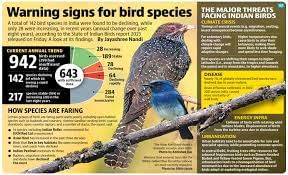
Why in News?
According to the State of India’s Birds 2023 Report, there is a general decline in numbers in most bird species in the country.
- While the raptors, migratory shorebirds and ducks have declined the most, several bird species such as the Indian Peafowl, Rock Pigeon, Asian Koel and House Crow are showing an “increasing trend”.
- The SoIB report was created to assess the conservation status of the majority of species that regularly occur in the country.
- SoIB is published by the State of India’s Birds Partnership, a group of 13 government (including SACON, WII, ZSI) and non-governmental organisations.
- Worldwide, common and widespread species are declining. But in India, lack of information has meant that conservation attention has been focussed on only a few species (usually large, charismatic and threatened).
- The 2023 Report, in its second iteration (1st in 2020), fills this gap by using over 30 million observations uploaded to the eBird platform by more than 30,000 birdwatchers.
- This helped in evaluating the distribution range size of 942 Indian birds, and their trends in abundance in both the long term (over 25+ years) and currently (since 2015).
- Using these three measures, plus information from the IUCN Red List of global threat status, this report places Indian species into Low, Moderate and High categories of Conservation Priority for India.
- A large number of species that are thought to be common and widespread find themselves as of High Conservation Priority in the SoIB 2023 Report.
- Decline, overall:
- Of the 338 species that had enough data to assess for long-term trends, 60% of the species showed long-term declines. Of the 359 species analysed for current annual trends, 40% are declining.
- Birds that feed on vertebrates and carrion (including raptors and vultures) have declined greatly, suggesting harmful pollutants in their food resources, a decline in prey availability, or both.
- Birds endemic to the Western Ghats and Sri Lanka biodiversity hotspot have rapidly declined in India over the past few decades.
- Some increases:
- A few generalist bird species such as the national bird - the Indian peafowl, are doing extremely well in the country.
- There has been a 150% increase in the abundance of peafowl across the country over the past decades.
- The good news of the increase is tempered by a recognition of increased reports of crop damage in different parts of the country, and the negative impacts on snakes and other reptiles.
- Therefore, it is important to investigate the impacts of this peafowl boom on both people and ecosystems.
- Species of high conservation priority:
- Out of the all 942 species, 178 species are classified as High Priority, 323 as Moderate Priority, and 441 as Low Priority.
- The High Priority species include migratory wetland birds like the Ruddy shelduck, resident species such as the Indian courser, endemics such as the Narcondam hornbill and the Nicobar megapode on Nicobar Island.
- The report also highlighted major threats including - forest degradation, urbanisation and energy infrastructure - that bird species face across the country.
- Environmental pollutants including veterinary drugs such as nimesulide still threaten vulture populations in India.
- Other concerns include the impacts of climate change (such as on migratory species), avian disease and illegal hunting and trade.
- The report points to the need to conserve specific groups of birds.
- For instance, the grassland specialists have declined by more than 50% - indicating the importance of protecting and maintaining grassland ecosystems.
- Systematic monitoring of bird populations over long periods of time are critical to understand small-scale changes in bird populations.
- More research is needed to understand the reasons behind the declines or increases.
- As the abundant, widespread species provides several ecosystem services, river, water, or wasteland development policies must also converge, rather than act in opposition to each other.
- An action plan for conservation of bird populations and habitats must include citizen participation, which is an important contributor towards biodiversity conservation.
Source: The Hindu
|
38 videos|5293 docs|1118 tests
|
















